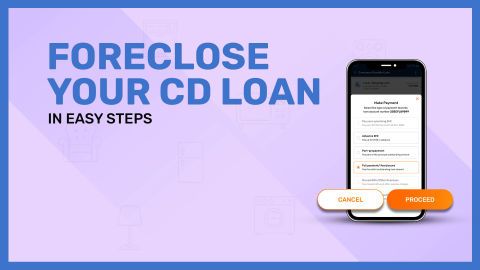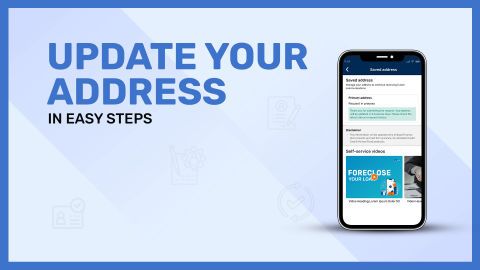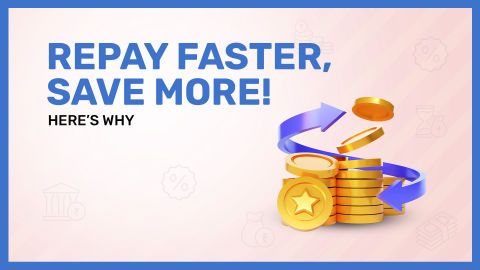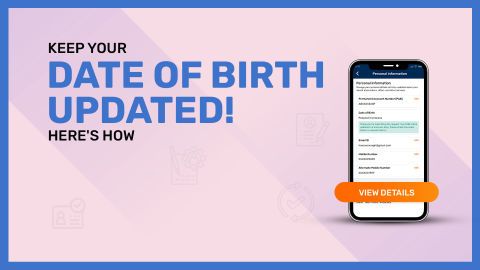Loan settlement is an essential financial process that allows borrowers to resolve their outstanding debts with lenders under agreed-upon terms. Whether due to financial hardship or the desire to close an account, loan settlement provides a structured way to pay off your loan, often for less than the total amount owed. This can be an appealing option for borrowers struggling with high-interest rates or those facing difficulty meeting monthly payments. The settlement process typically involves negotiating a lump sum payment, which may include reducing the overall balance or extending the repayment period. While it can offer significant relief, loan settlement requires careful planning and consideration of its long-term financial implications. It’s also important to understand how it can impact your credit score and future borrowing opportunities. In this guide, we’ll explore the loan settlement process, key benefits, potential challenges, and everything you need to know to make an informed decision.
Steps to settle your doctor loan
Settling a doctor loan is a viable option if you’re facing financial difficulties or if you simply want to clear the loan quickly. The process involves negotiating with your lender to reduce your debt or adjust the terms of the loan. Here’s a step-by-step guide to help you settle your doctor loan effectively.
1. Review your loan agreement
Understand loan terms: Before beginning the settlement process, carefully review your loan agreement. This document will outline the terms and conditions of the loan, including the interest rate, repayment schedule, and any penalties for early settlement.
Check for settlement clause: Some loan agreements may have a settlement clause that specifies the conditions under which the loan can be settled early or for a reduced amount.
Understand fees and penalties: Make sure you are aware of any additional charges for early repayment or settlement. Some lenders may impose a fee, while others may offer a discount for clearing the loan early.
2. Calculate the outstanding loan balance
Know your remaining loan amount: To settle your loan, it’s essential to know the exact amount remaining on your loan. Contact your lender to get an updated loan balance, including interest and fees.
Include all interest and charges: Make sure to account for any interest, penalties, or processing fees that may be added to the principal amount. Ensure that the figure you are working with reflects the full outstanding debt.
Account for prepayment charges: Some loans may carry prepayment charges or penalties for settling the loan early. Verify these charges with your lender to understand the total amount required for settlement.
Consider a reduced settlement offer: If your financial situation allows, ask the lender if they would be willing to accept a reduced payment to settle the loan. This option could reduce the total amount owed.
3. Contact your lender for settlement options
Initiate communication: Reach out to your lender to discuss the possibility of settling your loan. It’s important to have an open and honest conversation about your financial situation.
Explore settlement terms: Ask your lender about available settlement options. Some lenders may offer a lump-sum settlement, while others may agree to restructure the loan with new terms.
Negotiate a reduced amount: If you’re facing financial difficulties, negotiate with the lender for a reduced settlement amount. Many lenders are willing to accept a lesser amount if it guarantees repayment and saves them the cost of pursuing the debt.
Understand the impact on credit score: Be aware that settling a loan may impact your credit score. Ensure that you discuss with the lender how the settlement will be reported to credit bureaus.
Get everything in writing: Once you’ve agreed on the terms of the settlement, make sure to get the arrangement in writing. This ensures that there are no misunderstandings in the future.
4. Pay off the remaining loan amount
Make the payment: Once you and your lender have agreed on the settlement terms, make the agreed-upon payment, whether it’s a lump sum or in installments.
Ensure proper documentation: Keep records of all payments made as part of the settlement. This could include bank statements, receipts, or settlement letters from your lender. These documents will serve as proof that the loan has been settled.
Verify loan closure: After the payment is made, ensure that your lender officially closes the loan account. Request a settlement letter or a no-dues certificate to confirm that the loan has been fully paid off and that no further action is required.
Monitor your credit report: Check your credit report to ensure that the loan is marked as settled. It’s important to verify that the lender reports the settlement accurately to the credit bureaus to prevent any negative impact on your credit score.
Documents required for settling your doctor loan
When you decide to settle your doctor loan, having the correct documents in place is crucial for a smooth process. The documentation will not only help in negotiating the settlement but also ensure that the transaction is transparent and legally binding. Below is a list of documents typically required to settle your doctor loan:
1. Loan agreement
Proof of loan terms: The original loan agreement outlines the terms and conditions, including the loan amount, interest rate, repayment schedule, and any clauses related to early settlement.
Important for negotiation: This document is essential when discussing the loan settlement with the lender. It provides the framework for what was initially agreed upon.
2. Loan repayment statements
Record of payments made: Request a detailed repayment statement from the lender, showing all payments made, the outstanding balance, and any accrued interest or penalties.
Helps in calculating settlement: These statements provide a clear picture of your financial commitment and the remaining balance, which will be important for calculating the final settlement amount.
3. Identity proof
Valid identification: Government-issued identification such as an Aadhar card, passport, or driver’s license may be required to verify your identity when applying for a loan settlement.
KYC process: Lenders require identity verification as part of their Know Your Customer (KYC) process to ensure that the settlement request is coming from the rightful borrower.
4. Address proof
Current residential address: Utility bills, bank statements, or rental agreements can serve as valid address proof. This helps the lender confirm your current residential details.
Required for legal documentation: Address proof may be necessary for legal correspondence or to complete the settlement formalities.
5. Bank statements
Proof of financial status: Lenders may ask for your last 3-6 months of bank statements to assess your ability to make a lump sum payment or if they need to restructure your loan.
Helps in negotiation: Bank statements are crucial for showing your financial situation and demonstrating why a settlement may be the best option.
6. Income proof
Salary slips or tax returns: Provide salary slips, income tax returns, or other relevant documents that demonstrate your income level. This is especially useful if you are negotiating a reduced settlement amount.
Used for payment assessment: Lenders use this information to assess how much you can pay in a lump sum or in installments.
7. No Objection Certificate (NOC) from previous lender (if applicable)
For loan transfers: If your doctor loan was transferred from one financial institution to another, you may need to provide an NOC from the previous lender confirming that there are no dues outstanding.
Clears debt record: The NOC acts as confirmation that the debt is fully cleared with the previous lender and there is no further action required.
8. Settlement request letter
Formal request: Write a formal letter requesting a loan settlement, specifying the terms you wish to negotiate, such as the reduced settlement amount or a new repayment schedule.
Letter of agreement: This is typically submitted to initiate the settlement negotiation process with the lender.
9. Settlement proposal document
Outline settlement terms: If you're requesting a reduced settlement amount, provide a proposal that outlines how much you can pay and the reason for the settlement request.
Supports negotiation: A clear proposal can aid in discussing favourable terms with the lender, including the reduction of the outstanding loan balance.
10. Post-settlement documents
Settlement letter: Once the settlement is agreed upon, ensure you get a settlement letter from the lender confirming that the loan has been fully paid off and closed.
No-dues certificate: A no-dues certificate ensures that the lender acknowledges that there are no outstanding dues or liabilities from your side after settlement.
Common challenges when settling a doctor loan
Settling a doctor loan can provide financial relief, but the process can be complex and challenging. Here are some common challenges borrowers face when attempting to settle a doctor loan:
1. High settlement amount
Negotiating a fair settlement can be difficult, and lenders may not offer a reduced amount. Borrowers may face financial strain if a significant portion of the remaining balance needs to be paid.
2. Negative impact on credit score
Settling a loan for less than the outstanding balance could harm your credit score, making it difficult to secure future loans. A "settled" status may impact future borrowing options.
3. Long settlement process
The process of negotiating and finalising the settlement can take time. It often involves multiple rounds of communication, leading to delays and prolonged uncertainty.
4. Increased financial pressure
Some lenders may require a lump sum payment, which could put financial pressure on the borrower. If the payment deadline is missed, the settlement agreement may become void.
5. Hidden fees and penalties
Lenders may impose hidden charges, such as processing fees or prepayment penalties, which can increase the cost of settlement and lead to unexpected financial burdens.
6. Lender reluctance to offer a settlement
Some lenders may be unwilling to offer a settlement, especially if the borrower hasn’t demonstrated financial hardship. The settlement terms may also be unfavourable, making it harder to agree.
7. Settlement acceptance delays
After reaching an agreement, lenders may delay the final settlement due to processing or approval requirements, causing uncertainty and additional stress for the borrower.
8. Legal implications and documentation issues
Missing or incomplete documents can delay the settlement process or invalidate the settlement. Legal actions and the need for extra documentation could complicate the process further.
9. Emotional stress and uncertainty
The negotiation process can be stressful, especially when facing financial difficulties. Even after several rounds of discussions, there is no guarantee that the lender will accept the settlement terms.
10. Settlement’s impact on future borrowing
A loan settlement can negatively impact future credit applications. Lenders may see the settlement as a red flag, making it harder to get approved for new loans.
Advantages of settling your doctor loan early
Settling your doctor loan early can provide significant financial relief and help you achieve a more stable financial position. Here are the key advantages of opting for early settlement:
1. Reduced interest payments
Settling your loan early reduces the total interest paid over the loan’s tenure, as interest is typically calculated on the remaining principal. By paying off the loan early, you avoid paying high interest on a prolonged loan term.
2. Improved financial health
Clearing your debt early can significantly improve your overall financial health. With one less financial obligation, you free up resources that can be redirected toward other financial goals like savings or investments.
3. Relief from EMI burden
Doctor loans typically come with EMIs that can be a strain on your monthly cash flow. By settling the loan early, you relieve yourself of the ongoing EMI payments, offering peace of mind and flexibility in your finances.
4. Increased creditworthiness
Early loan settlement can improve your credit score as it demonstrates your ability to manage debt responsibly. A higher credit score can make it easier to secure future loans at favourable terms.
5. Avoiding loan default
Settling the loan early reduces the risk of missing payments, which can lead to loan default. Avoiding default helps preserve your credit rating and prevents legal actions or penalties that may arise from delayed payments.
6. Peace of mind
Paying off your loan early provides peace of mind, knowing that you are free from any financial obligations tied to that debt. This sense of financial freedom allows you to focus on other aspects of your life, both personally and professionally.
7. Reduced stress and financial pressure
Early settlement helps reduce stress, as you no longer have to worry about monthly repayments. This reduction in financial pressure can enhance your overall well-being, as you are no longer burdened by loan-related concerns.
8. Eligibility for future loans
When you settle your doctor loan early, you demonstrate to future lenders that you can manage your finances responsibly. This can improve your chances of securing other loans in the future with better terms.
9. Flexibility in financial planning
With the loan cleared early, you have more flexibility in managing your finances. You can allocate funds towards new ventures, invest in your professional growth, or save for future financial goals.
10. No prepayment penalties (if applicable)
Many lenders offer incentives for early settlement, such as waiving prepayment penalties. It’s worth checking if your lender offers such terms before deciding to settle early.
Conclusion
In conclusion, settling your doctor loan early can provide several benefits, including reduced interest payments, improved financial health, and a stronger credit profile. To explore settlement options, you can reach out to Bajaj Finance customer service number or manage your loan through the customer portal. Early settlement not only alleviates financial strain but also sets you up for a more secure financial future.




